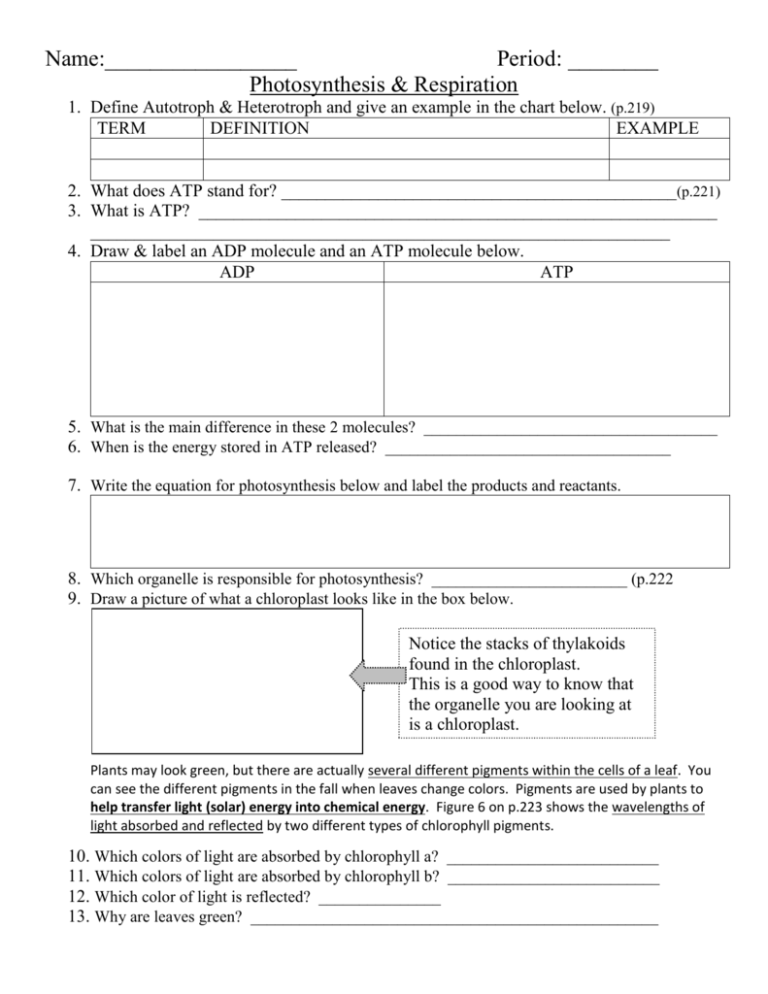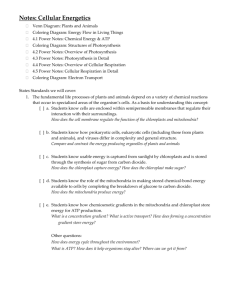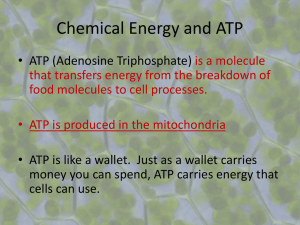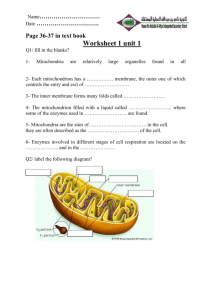Photo & Cell Resp Book Note Sheet
advertisement

Name:_________________ Period: ________ Photosynthesis & Respiration 1. Define Autotroph & Heterotroph and give an example in the chart below. (p.219) TERM DEFINITION EXAMPLE 2. What does ATP stand for? _____________________________________________(p.221) 3. What is ATP? ___________________________________________________________ __________________________________________________________________ 4. Draw & label an ADP molecule and an ATP molecule below. ADP ATP 5. What is the main difference in these 2 molecules? ____________________________________ 6. When is the energy stored in ATP released? ___________________________________ 7. Write the equation for photosynthesis below and label the products and reactants. 8. Which organelle is responsible for photosynthesis? ________________________ (p.222 9. Draw a picture of what a chloroplast looks like in the box below. Notice the stacks of thylakoids found in the chloroplast. This is a good way to know that the organelle you are looking at is a chloroplast. Plants may look green, but there are actually several different pigments within the cells of a leaf. You can see the different pigments in the fall when leaves change colors. Pigments are used by plants to help transfer light (solar) energy into chemical energy. Figure 6 on p.223 shows the wavelengths of light absorbed and reflected by two different types of chlorophyll pigments. 10. Which colors of light are absorbed by chlorophyll a? __________________________ 11. Which colors of light are absorbed by chlorophyll b? __________________________ 12. Which color of light is reflected? _______________ 13. Why are leaves green? __________________________________________________ 14. Why do leaves turn yellow, red and orange in the autumn in some parts of the United States? ____________________________________________________________________ (p.224) 15.Write the equation for cellular respiration and label the products and reactants. (p.228) 16.Which organelle is responsible for respiration? ____________________________ 17.Draw a picture of what a mitochondrion looks like in the box below. Notice the folded membranes found in mitochondria. This is a good way to know that the organelle you are looking at is a mitochondrion. Mitochondria convert the energy found in glucose into energy for use by the cell. In short, it turns chemical energy into cellular energy. 18.What is the molecule used by the cell for energy? (refer to #3 on the front of this page) _______ There are 2 kinds of cellular respiration that can take place in the mitochondria. They are described below. Type of Respiration Aerobic Anaerobic Description # of ATP produced Requires oxygen Does not require oxygen 36-38 2 19.Which type of respiration produces the most energy? _________________ 20.Why do you think that is? __________________________________________________ 21.Compare the photosynthesis and respiration equations; what do you notice about them? _______________________________________________________________________ 22. Looking the diagram below, __________________ happens in chloroplasts and __________________ happens in mitochondria. Sunlight Photosynthesis in Chloroplasts C6H12O6 + 6 O2 6 CO2 + 6 H2O Respiration in Mitochondria ATP











